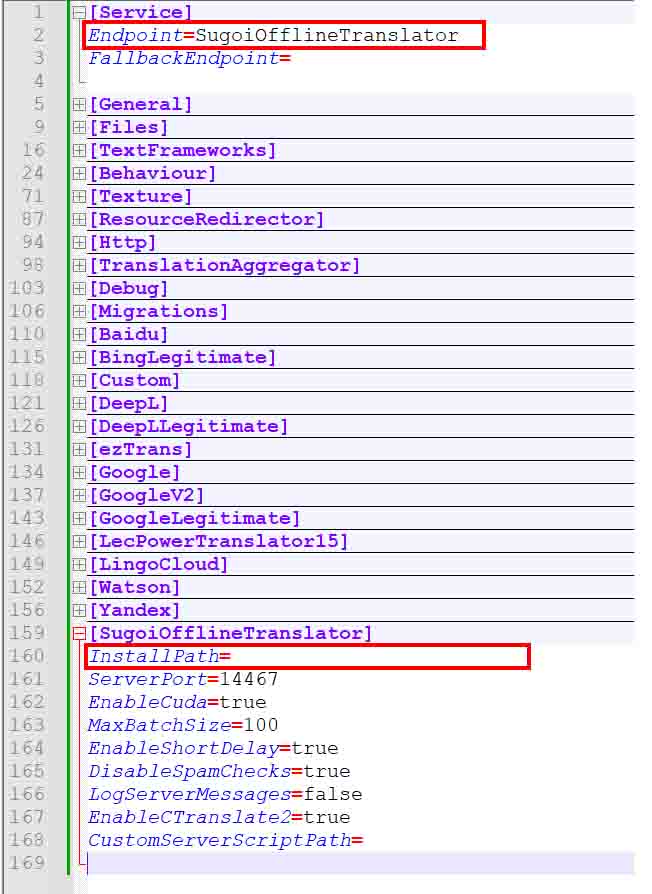Config to the Sugoi’s server Manually
To connect SugoiOfflineTranslator to the server independently, make sure that the Endpoint in the [Service] section is set to SugoiOfflineTranslator, and the InstallPath in the [SugoiOfflineTranslator] section is set to empty.
How To Connect to the Server
Basically, to connect to the server, you need to match the IP host and port. Although XUAT has a configuration to set the port, the server’s Endpoint always remains at the default number. Which is:
127.0.0.1:14366You can check this by looking at the LogOutput.log to ensure the required IP and port for the request.

Conclusion
It is still being debated which way is the fastest. but based on my experience, running natively via Path is noticeably faster probably because configurations like MaxBatchSize don’t work. YOJET translates one by one according to the order of requests, while the Native Path can hold for a moment to request batched requests.


